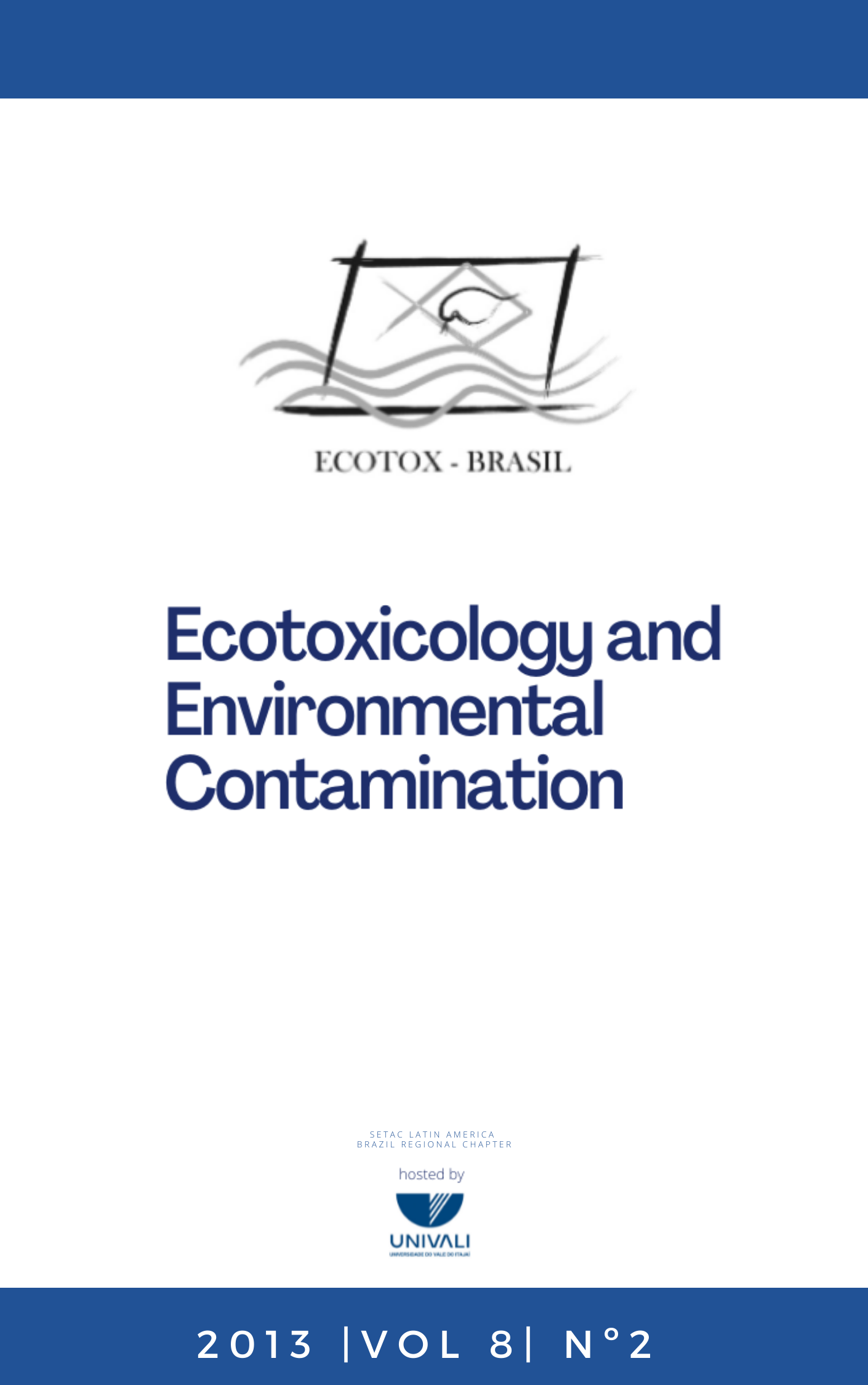Toxicity Bioassay Validation as a Support for Monitoring Effluent Discharge
DOI:
https://doi.org/10.5132/eec.2013.02.001Resumen
The present work aimed evaluating the impact of precipitation with sodium hydroxide and sodium sulfide, that clearly reduce the chemical contaminants of the effluent, leading to toxicity reduction. Metal analysis by ICP/AES (Inductively Coupled Plasma/Atomic Emission Spectroscopy), physicochemical analysis (pH) and toxicological analysis (by measuring the production of micronuclei in Allium cepa) were performed in the effluent studied before and after the precipitation. The analysis before treatment showed the extreme acidity of the effluent (pH<1,0), metals above the acceptable level for discharging according to the standards (especially zinc and iron) and significant mutagenicity. After precipitation with sodium sulfide, there was enough reduction in metals concentration to allow the effluent discharging within the limits specified by Conama Resolutions 357/2005 and 430/2011, and with both precipitants the discharging was possible according to the limits specified by 8468/76 Decree (São Paulo State/Brazil) (for the elements studied). There was also significant reduction in mutagenicity after treatment. The use of mutagenicity bioassay with A. cepa as a supplementary protocol to the ones already recommended for effluent analysis is emphasized in the present work.
Descargas
Descargas
Publicado
Cómo citar
Número
Sección
Licencia
Copyright © 2006 ECOTOX-Brasil
Copyright notice: It is a condition for publication that manuscripts submitted to this journal have not yet been published and will not be simultaneously submitted or published elsewhere. By submitting a manuscript, the authors agree that copyright for their article is transferred to the Sociedade Brasileira de Ecotoxicologia (ECOTOX-Brasil) if and when the article is accepted for publication. The copyright covers the exclusive rights to reproduce and distribute articles, including reprints, photographic reproductions or any other reproduction of a similar nature, including translations. No part of this publication may be reproduced, stored in a retrieval system or transmitted in any form or by any means, electronic, mechanical, photocopying, recording or otherwise, without permission of the publisher.
Notice: While every effort is made by the EEC, editors and editorial board to see that no inaccurate or misleading data, opinions or statements appear in this journal, they wish to make it clear that the contents of the articles and advertisements published herein are the sole responsibility of the contributors or advertisers concerned. Accordingly, the EEC, the editorial board and editors and their respective employees, officers and agents accept no responsibility or liability whatsoever for the consequences of any inaccurate or misleading data, opinion or statement.




